Smart Solutions for Clothes Closets
http://decor-ideas.org 01/17/2015 23:13 Decor Ideas
Whether yours is spacious or practically pocket size, the clothing closet is a space that can nearly always use some improvement. Here are tips for adjusting the layout, choosing the right closet components and finding extra space.
Hardworking space: The clothes closet.
The challenge: When the clothes closet is working well, it makes getting ready (and getting on with your day) a breeze; when it’s not, mornings can become a hassle. These ideas can help you find the right storage and organizing plan for your space.
Good to know: It helps to measure your stuff before investing in a closet system — that way you can be sure you’re getting exactly the right storage for your wardrobe.
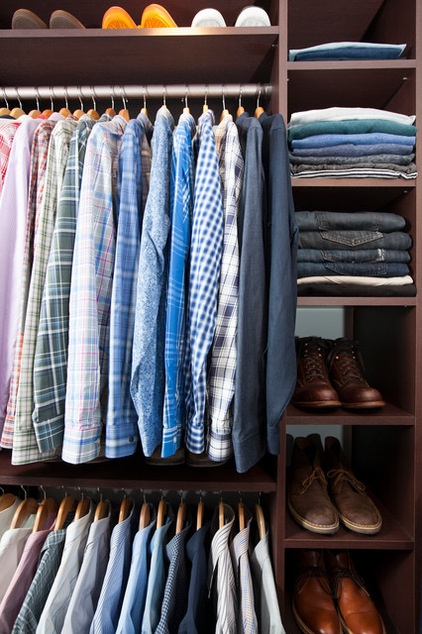
Design idea: Double up on hanging rods and make room for narrow shelving.
Why: Having enough room to hang your crisp shirts is a must, but using a sliver of extra closet space for a tall, narrow shelving unit can be worth sacrificing a bit of hanging space — shoes, jeans and sweaters can all fit on shelves 12 to 16 inches wide (measure your belongings to see what size you need).
Cost: From $100 for a simple freestanding shelving component; more for a semicustom unit with integrated shelving and hanging rods.
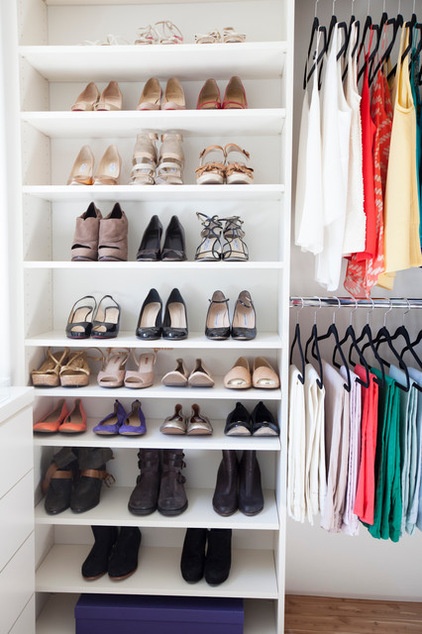
DIY idea: Bookcase as closet storage.
Why: A simple bookcase with adjustable shelves is often just the right size for holding shoes, boots, bags and more.
Extras: To use your bookcase as storage for sweaters, add shelf dividers to keep piles from toppling over. If you keep your shoes in their boxes, label the outside with a photo of the shoes so you can tell what’s what at a glance.
Cost: From about $150 for a simple bookcase. Or repurpose a bookcase from elsewhere in your home for free.
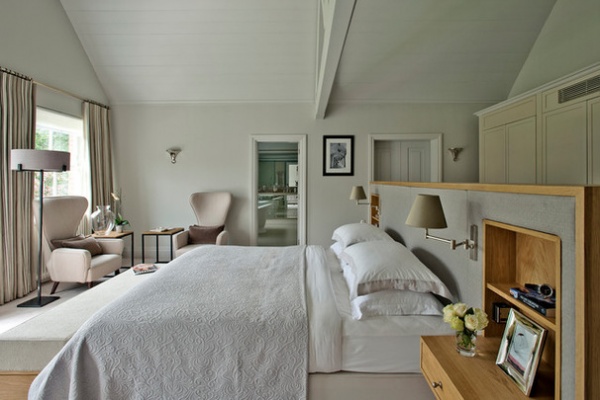
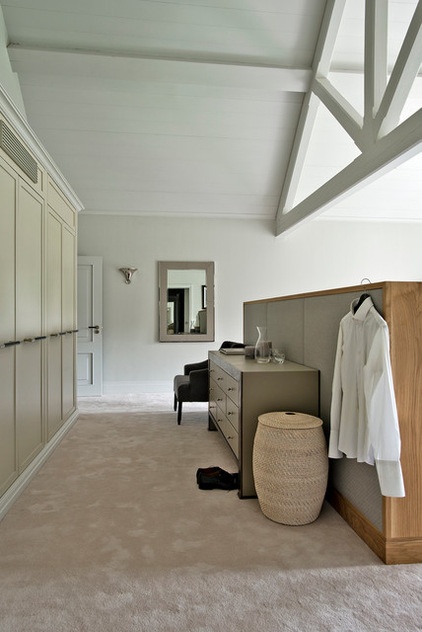
Design idea: Wardrobe behind the bed.
Why: Get more function out of a spacious master bedroom by using free space for a dresser and wardrobe. Positioned in the same zone, these pieces act like a dressing room, with everything you need to get ready in one place.
How: Position the master bed in the center of the room instead of on a wall to allow room for a dressing area behind the bed. This works best with a large (king- or California king–size) bed with a solid headboard, as shown here. Place your dresser behind the headboard, facing the closet or a freestanding wardrobe.
Layout tip: This arrangement works well only in large bedrooms — once everything is positioned, you should have 3 to 4 feet (or more) between the dresser and closet doors.
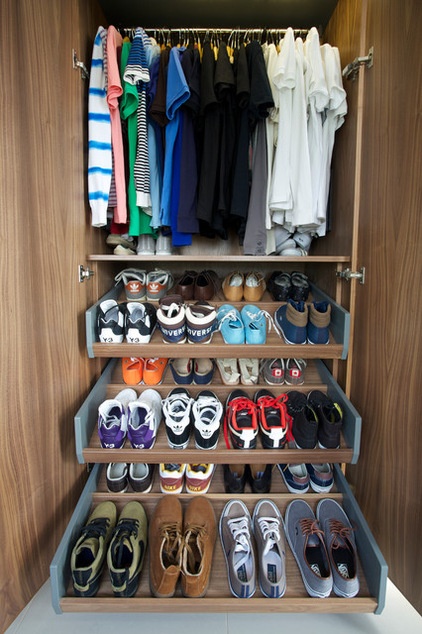
Design idea: Sliding shoe shelves.
Why: This smart space saver can pack dozens of pairs of shoes into a relatively small space.
How: Many cabinets and closet systems can be customized with sliding shelves. If you already have a closet system, purchase components from the same manufacturer to ensure that they fit. If you are creating a closet from scratch, work with a closet designer to get exactly the shoe storage you need.
Planning tips: Note the measurements of the shoe shelves you will be purchasing, and tape out the dimensions on your floor. Then fill the space with shoes you want to store — this will allow you to know precisely how many pairs each shelf will fit. Pay attention to the height of the shoes you want to store, too — flats and sneakers can go on shelves positioned closer together; heels and boots need more space.
Cost: From $50 to $150 and up per shelf.
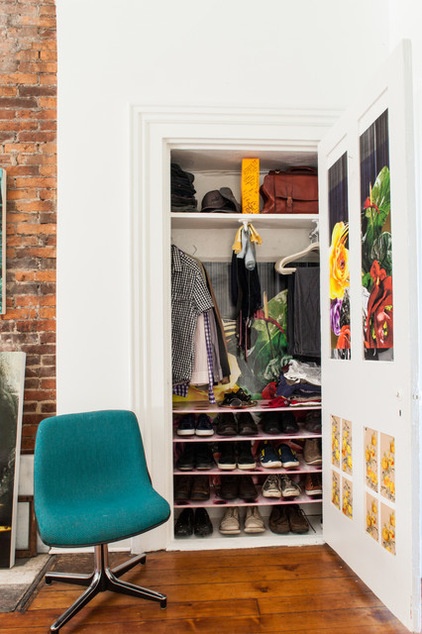
Small-closet tips: Make the most of a small, shallow closet by outfitting it with components that make sense. Instead of one long hanging rod, go with a pair of shorter valet rods to hang clothes boutique-style. Fill in all the extra space above and below the rods with shelving for shoes, accessories and sweaters, and install hooks under the shelves to hold bags or scarves.
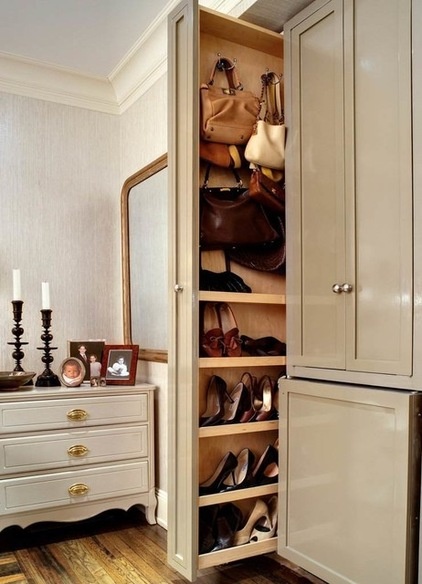
Design idea: Pullout accessory cabinet.
Why: Sneak a lot of storage into a sliver of space with a slim pullout closet component for shoes, bags and more.
How: This is best worked into a larger closet design plan. Look for pullout shelving in a ready-made closet system, or work with your closet designer to create the perfect slide-out shoe shelf for you.
Planning tip: Take the time to measure your shoes, bags and anything else you hope to store before choosing a piece like this — it won’t do you much good if your favorite shoes are too big to fit inside!
Cost: Around $500 and up, with higher costs for better materials, more intricate details, additional shelving and custom designs.
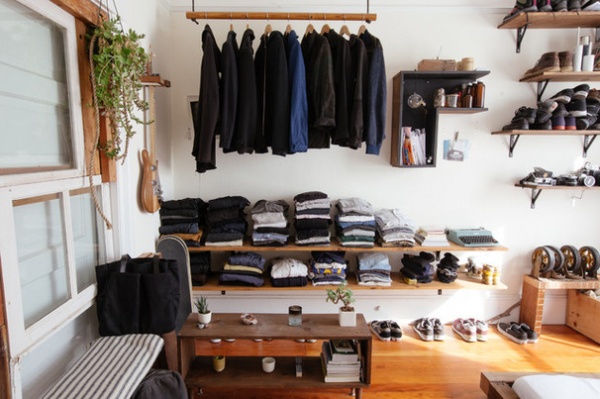
DIY project: Make your own scrap-wood closet components.
Why: Handy folks can save cash by building their own shelving and hanging rods. Doing it yourself also will allow you to customize the pieces to fit your space perfectly.
How: Use scrap wood and simple brackets to create shelves to store clothes, shoes and accessories. To make a hanging rod, drill a hole near each end of a wooden pole. Thread rope through each hole and knot it securely before attaching to the ceiling — an improperly tied knot, an insecure connection or too much weight on the rod can cause it to fall. If you’re at all unsure, get a handyperson to install it for you.
Cost: If the components are purchased new from a home improvement store, a project like this could cost from $200 to $500. To keep costs lower, search locally for free or low-cost scrap wood and supplies.
My Houzz: 2 Tools + 1 Resourceful Guy = Lots of Great ‘New’ Furniture
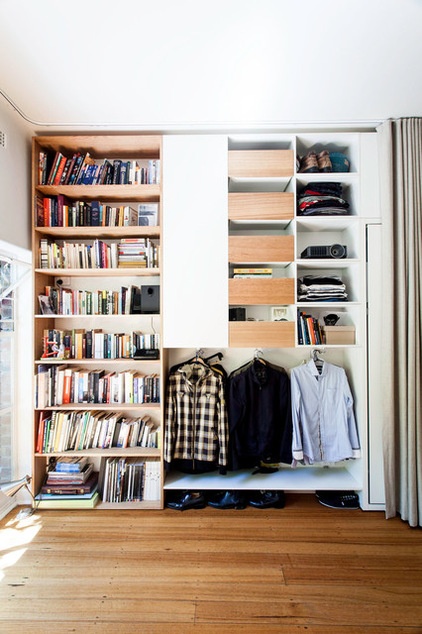
Design idea: Ceiling-mounted curtain track.
Why: Hide a wall of clothing storage with the sweep of a curtain — a great solution for studio apartments and other small spaces.
How: Hang ceiling-mounted curtain tracks along the length of your closet storage wall.
Planning tip: Measure carefully before ordering curtains to ensure they are long enough to reach from ceiling to floor — you can always have them hemmed a bit shorter, but if they are too short, there’s not much you can do.
Cost: $5 to $50 for a ceiling-mounted curtain track, plus the cost of the curtains.
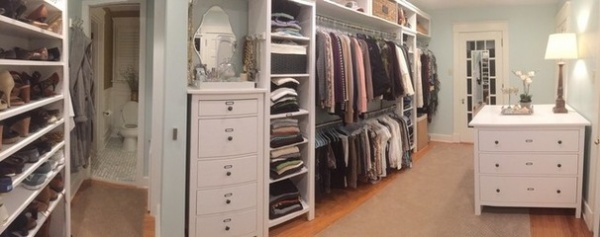
Design idea: Outfit a spare room as a dressing room.
Why: If you’re short on closet space but lucky enough to have a spare room, turning it into a spacious walk-in closet and dressing area can make getting ready a pleasure. Using closet components that can be removed will give you the flexibility to use the room for another purpose (guest room, nursery, office) down the road.
How: Houzz user babacon, who shared this photo with us, used pieces from the Hemnes line at Ikea to transform a small spare room into a highly functional dressing space. Dresser drawers and shelving hold folded clothes and shoes, while storage above hanging rods holds items used less frequently.
Cost: $400 to $800 for dressers and basic closet components, installed yourself.
Turn That Spare Room Into a Walk-In Closet
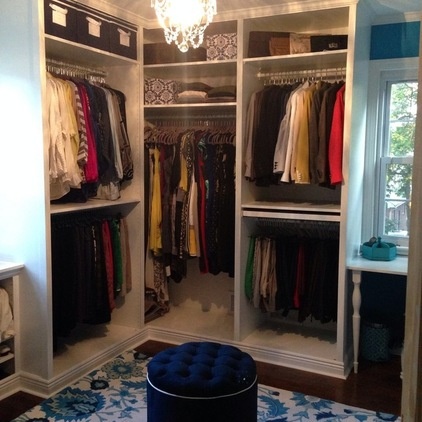
Extras: Houzz user pmartinezv used Ikea’s Pax closet components to turn a spare room into a walk-in wardrobe — and kicked it up a notch by adding a sparkling chandelier and a comfy stool for perching while putting on shoes.
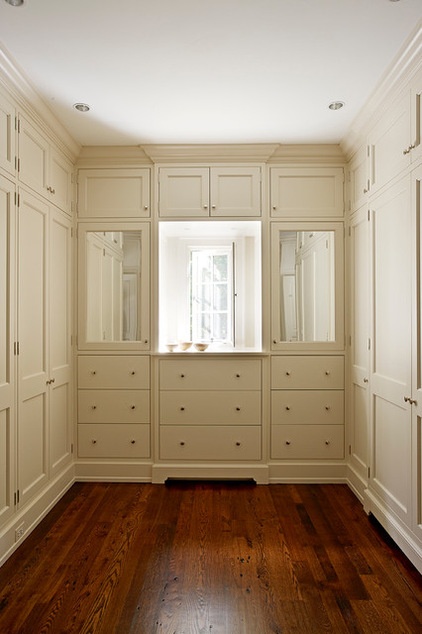
Design quandary: Open or closed storage? If your closet is visible from the master bedroom, consider going with closed storage — an open closet can be less-than-restful to look at when you’re trying to unwind. A few doors with mirrors will save you from needing to hang a full-length mirror elsewhere. If you have a walk-in closet, you may want to leave off the doors. It will cut costs and allow you to see your wardrobe at a glance.
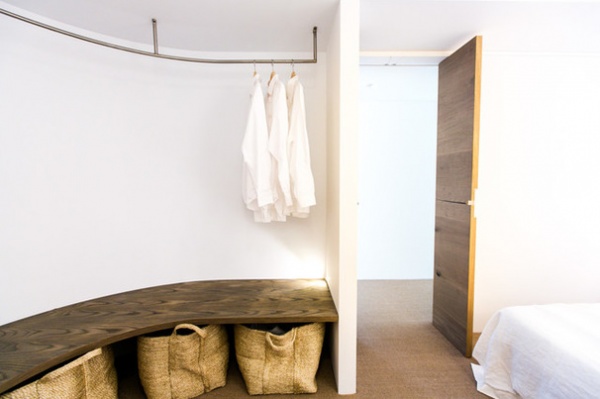
Design idea: Open hanging and accessory storage space in the bedroom.
Why: Supplement limited (read: overstuffed) closet space with a hanging rod, a bench and woven bins for accessory storage in the bedroom. Give outfits for the upcoming week room to breathe and keep favorite shoes and accessories close at hand with this setup.
How: Install a ready-made hanging clothes rod or create your own using plumbing pipe and fittings from the hardware store. A bench positioned beneath the hanging rod (purchased or made to fit) can be a perch for putting on shoes or can act as a shelf. Tuck a few baskets beneath the bench to hold accessories or sweaters.
Clutter-busting tip: This setup runs the risk of looking messy if you store too many clothes on the rack. Instead of thinking of this as a second closet, treat it as a weekly display area where you can keep your current seasonal favorites within reach and come up with new outfit combinations. Pay attention to what you bring into this zone — things that don’t make the cut could be items to consider culling.
Cost: From around $20 to $75 for a hanging rod or plumbing pipe and fittings, depending on materials and size, plus the cost of the bench and baskets.
More:
13 Ways to Spiff Up Your Closet — and Your Dressing Routine
12 Ways to Get More Out of Your Closet This Year
Related Articles Recommended












